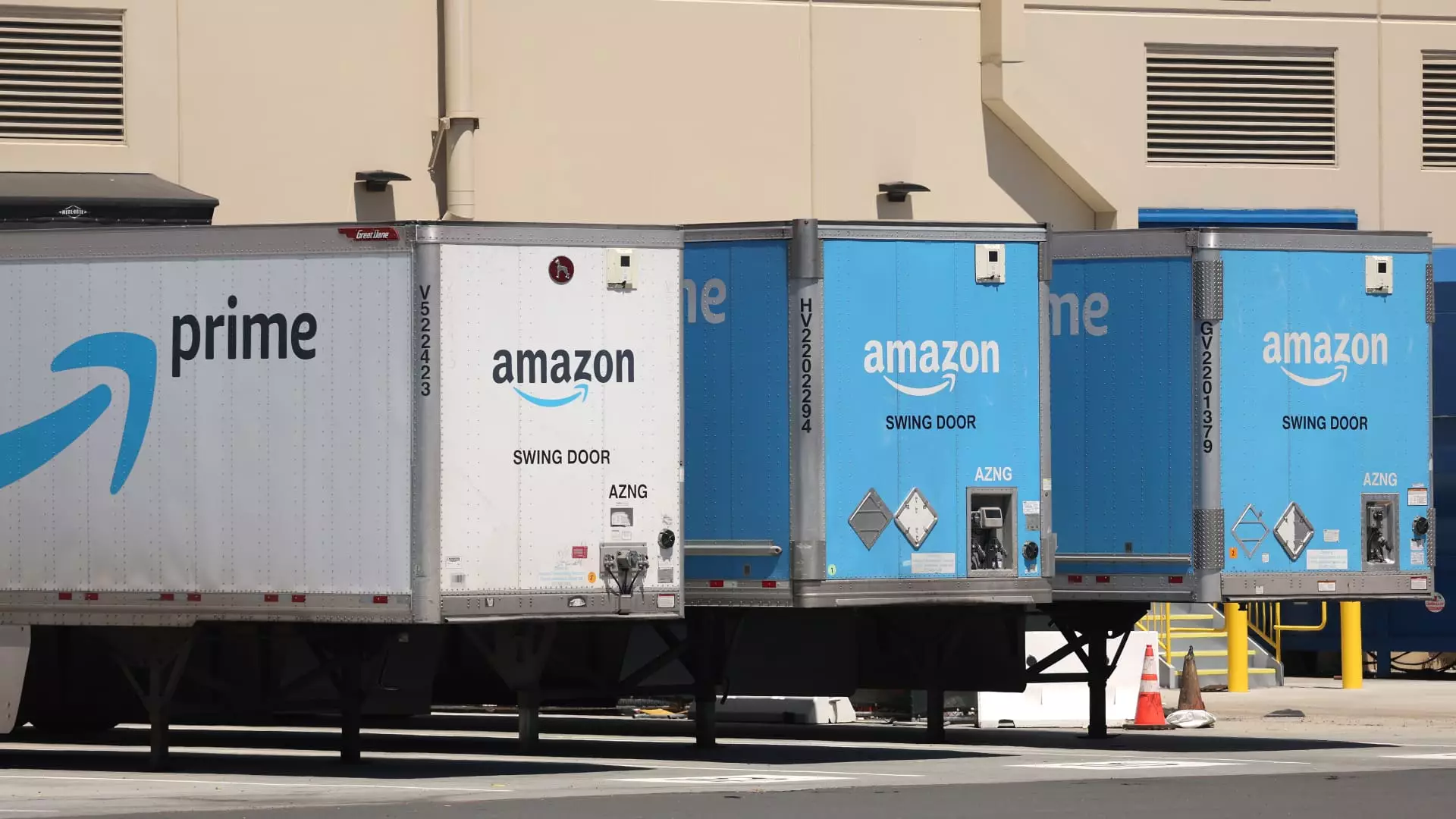In recent developments, the Department of Justice (DOJ) has exposed a brazen crime ring with ties to Armenian organized crime, which orchestrated the theft of over $83 million worth of cargo from Amazon. This situation highlights the vulnerabilities inherent in modern supply chains, particularly within the e-commerce giant’s operations. The alleged criminals seized upon Amazon’s expansive network, masquerading as legitimate freight drivers, thereby revealing significant loopholes in cargo handling and security protocols.
The audacity of the scheme is striking. Not only did these criminals manage to siphon off a variety of high-demand consumer goods, including smart TVs and air fryers, but they executed their operations across California for an extended period, starting from 2021. This type of organized theft, often dismissed as an occasional nuisance, is endemic to the current retail landscape and is emblematic of a larger trend that needs addressing.
The Struggles of a Retail Giant
The DOJ’s complaint underscores a critical issue facing Amazon and other major retailers: the omnipresent threat of cargo theft. In a world where online shopping dominates, the logistics that underpin these transactions are increasingly susceptible to exploitation. Experts place annual losses due to cargo theft at nearly $1 billion, indicating that this organized heist may merely signify the tip of the iceberg.
Coordination between Amazon and law enforcement demonstrates a proactive approach; however, the scale of the problem suggests that combating cargo theft is a complex challenge. With the rise of ecommerce, especially post-COVID, companies are grappling with how to ensure that their supply chains remain secure while still satisfying consumer demand for rapid delivery.
Behind the Curtain of Deception
The modus operandi of the perpetrators involved setting up faux transport companies that obtained legitimate freight routes through Amazon Relay, an app that brokers freight loads to truckers. Upon receiving assignments from manufacturer’s warehouses, they cunningly diverted their routes, pillaging merchandise intended for Amazon facilities. This theft was not carried out in a haphazard manner; the fraudsters exhibited a clear understanding of logistics and navigated these networks with cold precision.
In essence, these so-called “self-styled carriers” were not mere thieves but played a sophisticated game of subterfuge, directly undermining both the operational aspects of Amazon and creating an overarching sense of distrust toward third-party logistics providers. This type of systematic theft underlines the pressing need for improved scrutiny of the transport sector, especially in scenarios ripe for exploitation.
Legal Ramifications and Broader Consequences
As investigations unfold, the links between defendants are now being scrutinized against a backdrop of serious additional allegations, including attempted murder, healthcare fraud, and illegal firearm possession. These accompanying criminal activities extend this case beyond mere cargo theft; they weave a troubling narrative about organized crime’s reach within legitimate supply channels and serve as a cautionary tale for companies navigating the complex intersection of online retail and logistics.
This legal entanglement emphasizes the broader implications of infrastructure failures not only for Amazon but for all businesses relying on truck-based logistics. It raises the question of how retail giants can further strengthen their defenses against a spectrum of fraud and theft.
Amazon’s Ongoing Efforts and Evolving Strategies
In light of these incidents, Amazon has ramped up measures aimed at identifying and eliminating fraud through vigilance and cooperation with law enforcement agencies. The investigation has revealed numerous stolen items—ranging from household appliances to electronics—indicating an urgent need for comprehensive tracking mechanisms that can identify discrepancies in the supply chain instantaneously.
While it’s commendable that Amazon is taking steps to address these issues, the reality is that stealing goods is now a multi-faceted problem that requires scalable solutions. Thus far, the response has focused on collaboration and sophisticated data analysis, underscoring the crucial role technology must play in securing future shipments. Implementing advanced analytics and real-time tracking technologies could help cut off the pathways exploited by these criminals, eventually leading to a drop in such alarming statistics.
In sum, as the tapestry of organized crime continues to weave through the fabric of e-commerce, the ever-watchful eye of regulatory bodies and innovative strategies from companies like Amazon must evolve, ensuring that they stay several steps ahead of those attempting to exploit an increasingly digital economy.


Leave a Reply